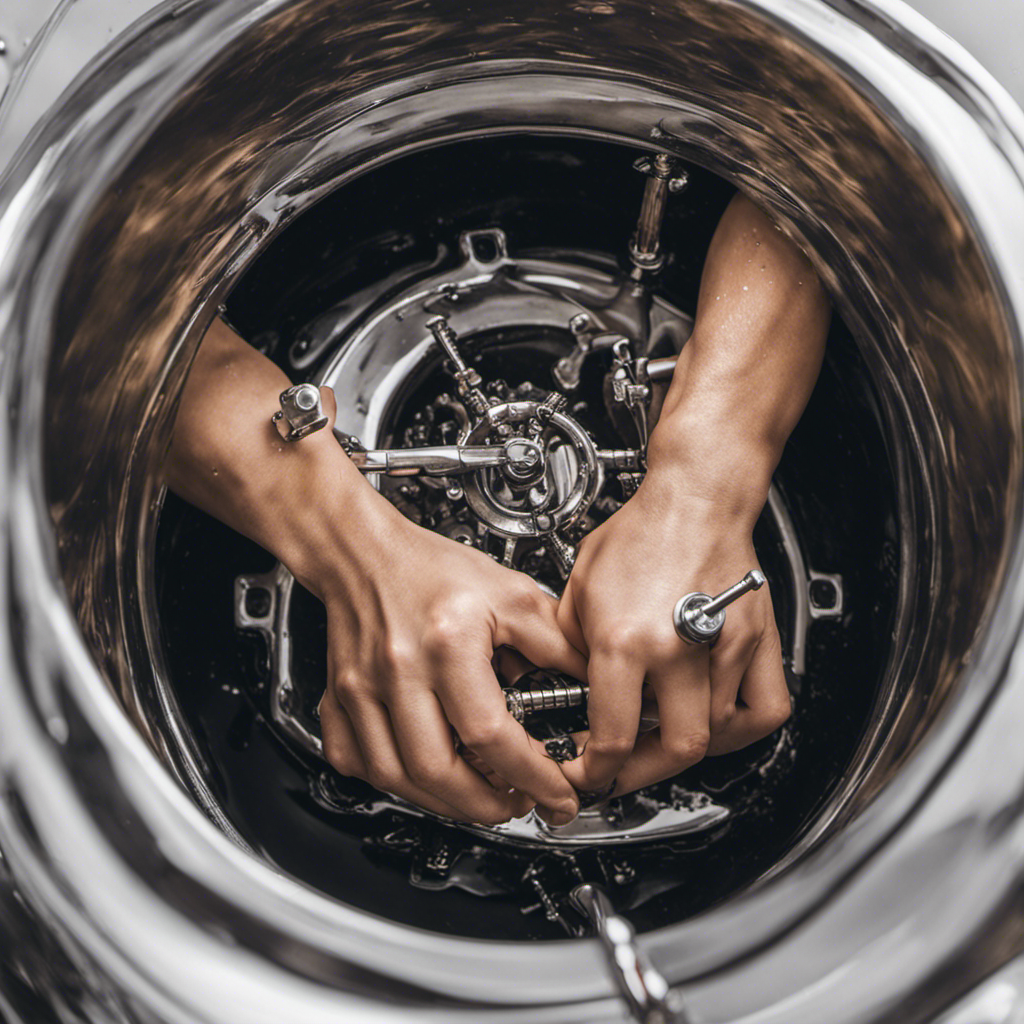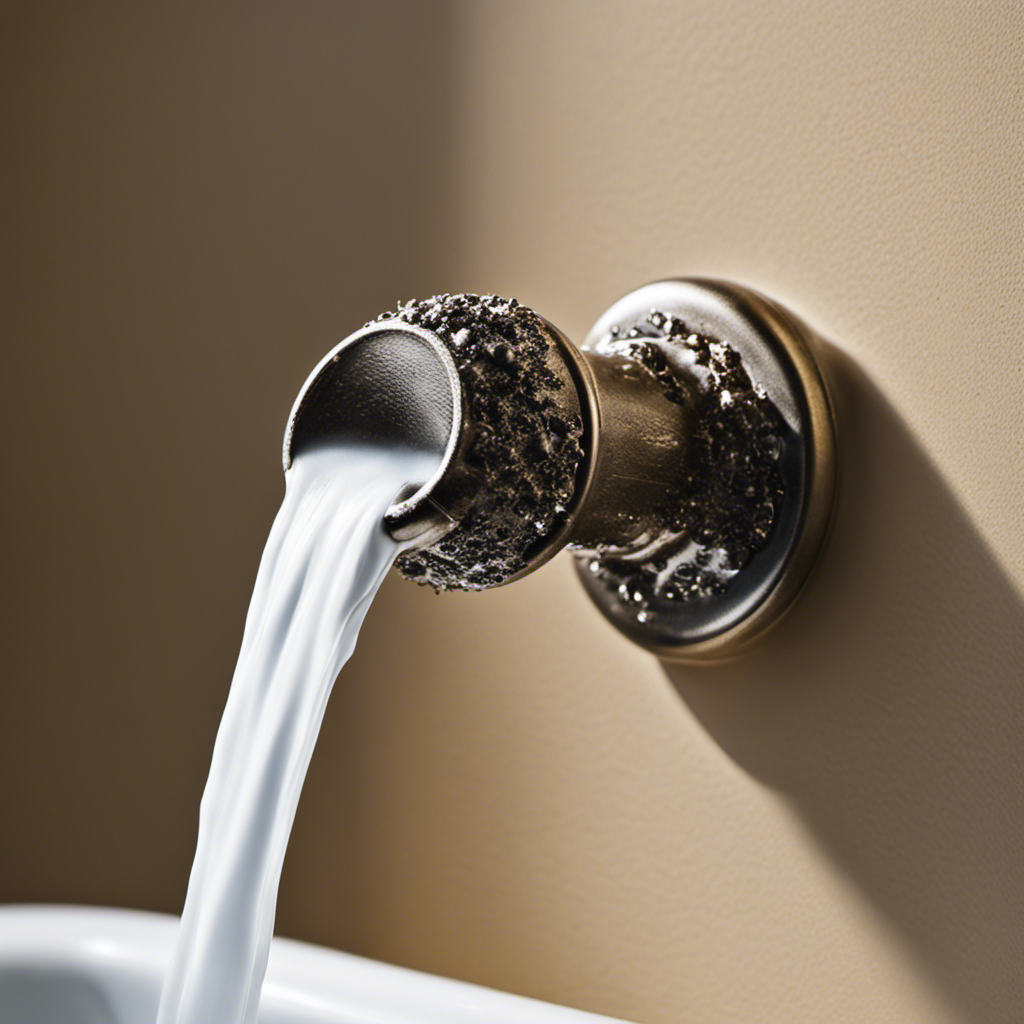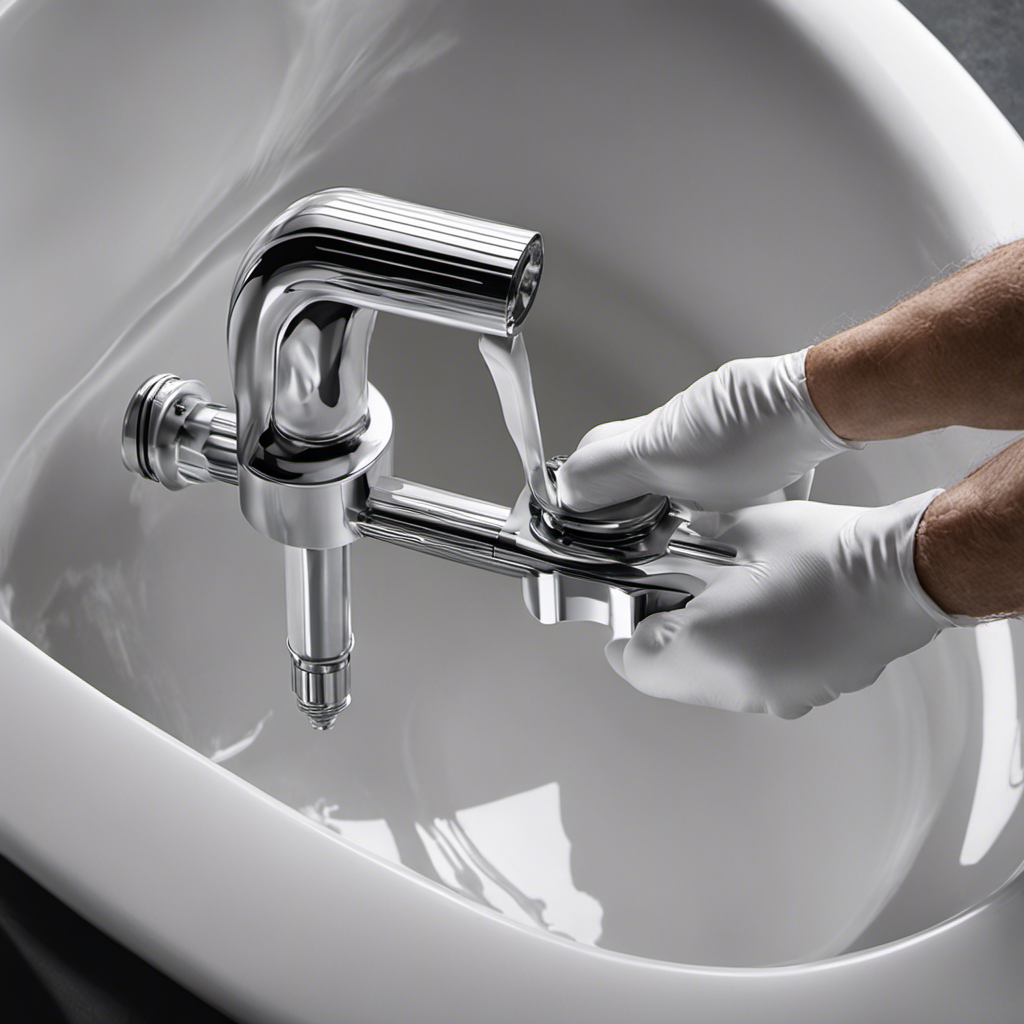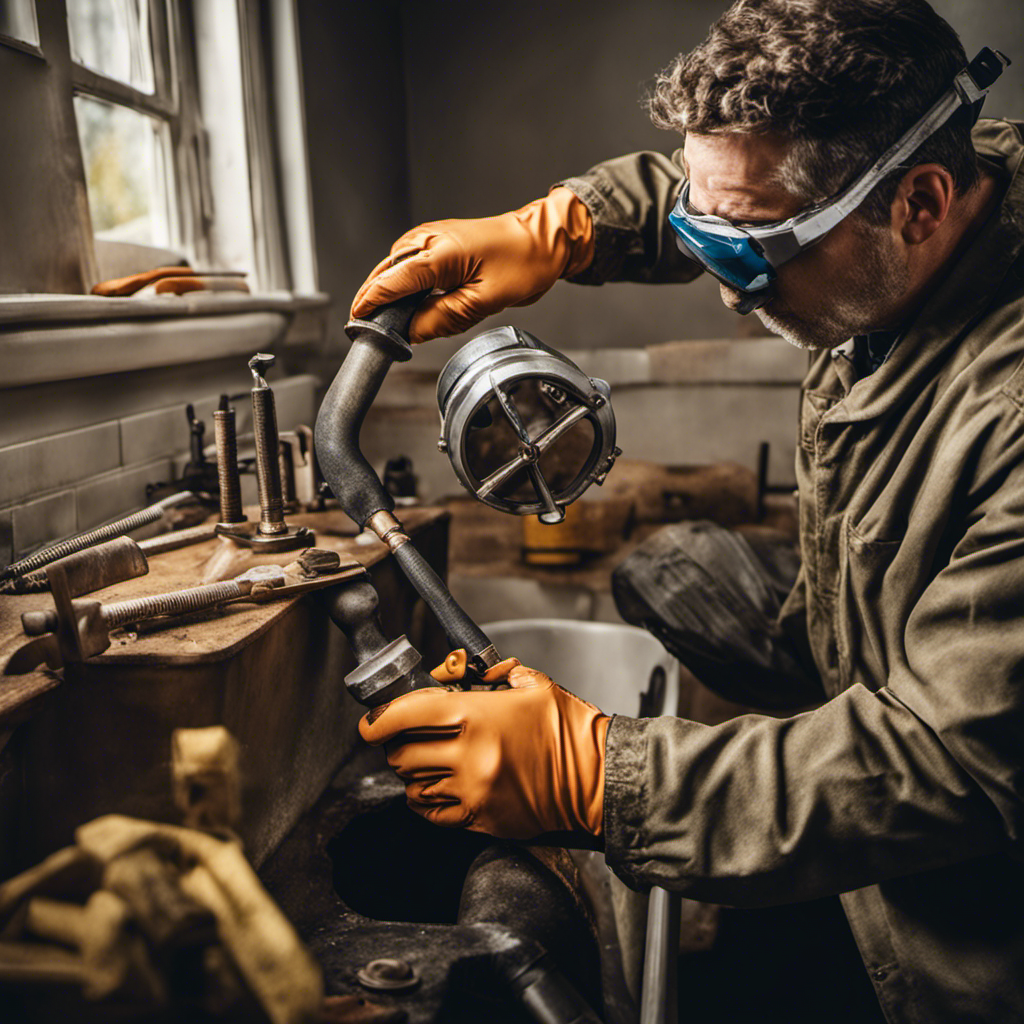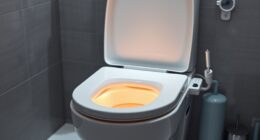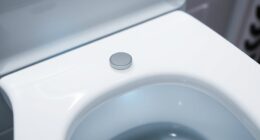As a DIY enthusiast, I have encountered my fair share of plumbing issues, and one of the most frustrating problems is a clogged bathtub drain. It’s like a stubborn roadblock that interrupts the smooth flow of your daily routine.
But fear not, because in this article, I will guide you through the step-by-step process of repairing your bathtub drain. With a few tools and a little know-how, you’ll be able to tackle this task with confidence and restore the unobstructed serenity of your bathing experience.
Let’s dive right in!
Key Takeaways
- Having the necessary tools such as pliers, screwdriver, and drain removal tool is essential for repairing bathtub drains efficiently.
- Identifying a clogged drain is crucial, and signs like slow drainage or complete blockage should be assessed.
- Checking for leaks is important to prevent further damage, and any leaks should be addressed promptly.
- Evaluating water drainage helps determine if the issue lies in the drain itself or the plumbing system, and professional help may be needed for complex problems.
Tools and Materials Needed
To repair the bathtub drain, you’ll need a pair of pliers, a screwdriver, and a drain removal tool. These tools are essential for unclogging drains and fixing common bathtub drain problems.
The pliers are used to grip and turn various parts of the drain assembly, while the screwdriver is needed to remove screws or loosen any fasteners. The drain removal tool is specifically designed to remove the drain cover or stopper, allowing access to the clog or problem area.
Having these tools on hand will make the repair process much easier and more efficient.
Once you have gathered these tools, you can move on to the next step of assessing the problem and determining the best course of action.
Assessing the Problem
When it comes to assessing the problem with a bathtub drain, there are a few key points to consider.
First, identifying a clogged drain is crucial in determining the appropriate course of action. This can be done by observing slow drainage or a complete blockage.
Next, checking for leaks is important as these can lead to further damage if left untreated.
Lastly, evaluating the water drainage is essential to determine if the issue lies in the drain itself or if there are other underlying problems with the plumbing system.
Identifying Clogged Drain
If your bathtub drain is clogged, you’ll likely notice slow draining and standing water in the tub.
To diagnose the issue, start by removing any visible debris from the drain opening.
If the problem persists, try using a plunger to create suction and dislodge the clog.
If that doesn’t work, you can try using a drain snake or auger to physically remove the blockage.
Another troubleshooting technique is pouring a mixture of baking soda and vinegar down the drain, followed by hot water. This can help break down any organic matter causing the clog.
If these methods fail, it may be necessary to call a professional plumber to assess the issue further.
Remember to always exercise caution and follow proper safety procedures when working with drain cleaning chemicals and tools.
Checking for Leaks
Check for leaks by inspecting the surrounding areas for any signs of water damage, such as dampness or discoloration. Leaks in the bathtub drain can cause significant damage if not addressed promptly. It is important to identify the source of the leak and understand the common causes of bathtub drain leaks. Here is a table summarizing the common causes of leaks and their corresponding solutions:
| Common Causes of Bathtub Drain Leaks | Solutions |
|---|---|
| Loose connection at the drain pipe | Tighten the connection using a wrench |
| Cracked or damaged drain pipe | Replace the damaged pipe section |
| Worn out or faulty drain gasket | Replace the gasket with a new one |
Evaluating Water Drainage
To evaluate water drainage in your bathroom, make sure to inspect the surrounding areas for any signs of pooling or slow draining.
When assessing water flow, start by checking the bathtub drain itself. Remove the drain cover and look for any debris or clogs that may be obstructing the flow of water.
Use a flashlight to get a better view of the drain pipe and see if there are any visible blockages.
If you don’t find any issues with the drain, the problem might be further down the line in the plumbing system. Troubleshooting drainage problems can be challenging, but it’s important to identify the cause to effectively address the issue.
If you’re unsure, it’s best to consult a professional plumber who can provide expert advice and assistance.
Removing the Drain Cover
When it comes to removing the drain cover, it is essential to follow proper techniques to avoid potential damage.
One must be knowledgeable about the tools needed for the removal process to ensure a successful outcome.
In this discussion, I will provide detailed instructions on how to properly remove the drain cover, highlight ways to avoid potential damage, and outline the necessary tools for the job.
Proper Drain Cover Removal
First, make sure you’ve turned off the water supply before attempting to remove the drain cover.
Proper drain cover installation is essential to prevent common bathtub drain problems.
To remove the drain cover, locate the screws or clips holding it in place. Use a screwdriver or pliers to loosen and remove these fasteners.
Gently lift the drain cover upwards, being careful not to damage the surrounding area.
Inspect the drain cover for any signs of damage or buildup, such as hair or debris.
Clean the drain cover thoroughly before reinstalling it. This will help maintain proper drainage and prevent clogs.
Avoiding Potential Damage
Be careful not to damage the surrounding area as you gently lift the drain cover upwards. This is an important step in avoiding potential damage during bathtub drain repair.
Preventing future issues is crucial, so it’s essential to understand the common causes of damage. Here are some key points to keep in mind:
- Avoid using excessive force when removing the drain cover to prevent scratching or breaking it.
- Be cautious of any loose or corroded screws, as they could cause further damage if not handled properly.
- Take extra care not to damage the surrounding tiles or bathtub surface while removing the cover.
- Inspect the drain pipe for any signs of clogs or blockages that may have caused the initial damage.
- Consider using a drain strainer or hair catcher to prevent future clogs and potential damage to the drain.
Tools Needed for Removal
To safely remove the drain cover, you’ll need a pair of pliers and a screwdriver. These tools are essential for the removal process and will ensure that you can access the drain efficiently.
Start by using the pliers to grip the edges of the drain cover firmly. Apply gentle pressure and turn the cover counterclockwise to loosen it. Once it is loose, you can use the screwdriver to finish removing it by prying it off completely.
Be careful not to damage the drain or surrounding area as you work. Once the drain cover is removed, you can proceed to the next step of clearing clogs and blockages.
It is important to approach this task with caution to prevent further damage to the bathtub drain system.
Clearing Clogs and Blockages
If you’re experiencing a clogged bathtub drain, you’ll want to start by using a plunger to try and clear the blockage. Here are some steps to help you clear stubborn clogs and prevent future blockages:
- Position the plunger over the drain and create a tight seal.
- Push down forcefully and then pull up quickly to create suction.
- Repeat this plunging motion several times to dislodge the clog.
If the plunger doesn’t work, try using a drain snake to break up the blockage. Once the clog is cleared, prevent future blockages by using a drain cover and avoiding pouring grease or large amounts of hair down the drain.
By following these steps, you can effectively clear clogs and ensure a smoothly running bathtub drain.
Now, let’s move on to the next section about repairing or replacing the drain assembly.
Repairing or Replacing the Drain Assembly
Once you’ve cleared the clog, it’s time to consider whether you should repair or replace the assembly.
When repairing a bathtub drain, you need to assess the extent of the damage. Look for any cracks or leaks in the drain assembly, which includes the drain flange, drain body, and stopper mechanism.
If the damage is minor, you can try fixing it by replacing individual components or using a drain repair kit. However, if the damage is extensive or the drain assembly is old and worn out, it’s usually best to replace the entire assembly. This ensures a longer-lasting solution and prevents future issues.
Now that you’ve decided on repairing or replacing, it’s time to move on to reinstalling the drain cover.
Reinstalling the Drain Cover
When reinstalling the drain cover, make sure it is securely fastened to prevent any water leakage. To ensure a proper installation, follow these steps:
- Clean the drain cover and the surrounding area to remove any debris or buildup.
- Apply a thin layer of plumber’s putty or silicone sealant to the underside of the drain cover.
- Position the drain cover over the drain opening and press down firmly.
- Use a screwdriver to tighten the screws or bolts that secure the drain cover in place.
- Test the drain by running water and checking for any signs of leakage.
Testing and Maintenance
To ensure proper functionality and avoid potential water damage, it’s important to regularly test and maintain the drain cover.
Testing equipment is essential to ensure that the drain cover is working effectively. One of the most common testing methods is to pour water down the drain and observe if it flows smoothly without any blockages.
Additionally, using a drain snake or plunger can help remove any debris or clogs that may be hindering the drain’s performance.
Maintenance tips for the drain cover include regular cleaning to prevent buildup of hair and soap scum, as well as checking for any cracks or damage that may require repair or replacement.
Conclusion
In conclusion, repairing a bathtub drain requires the right tools and materials, as well as a thorough assessment of the problem. By removing the drain cover and clearing any clogs or blockages, you can ensure proper drainage.
Repairing or replacing the drain assembly may be necessary to fix any underlying issues. Reinstalling the drain cover and conducting thorough testing ensures a job well done.
Remember to regularly maintain your bathtub drain to prevent future problems and ensure its longevity.
